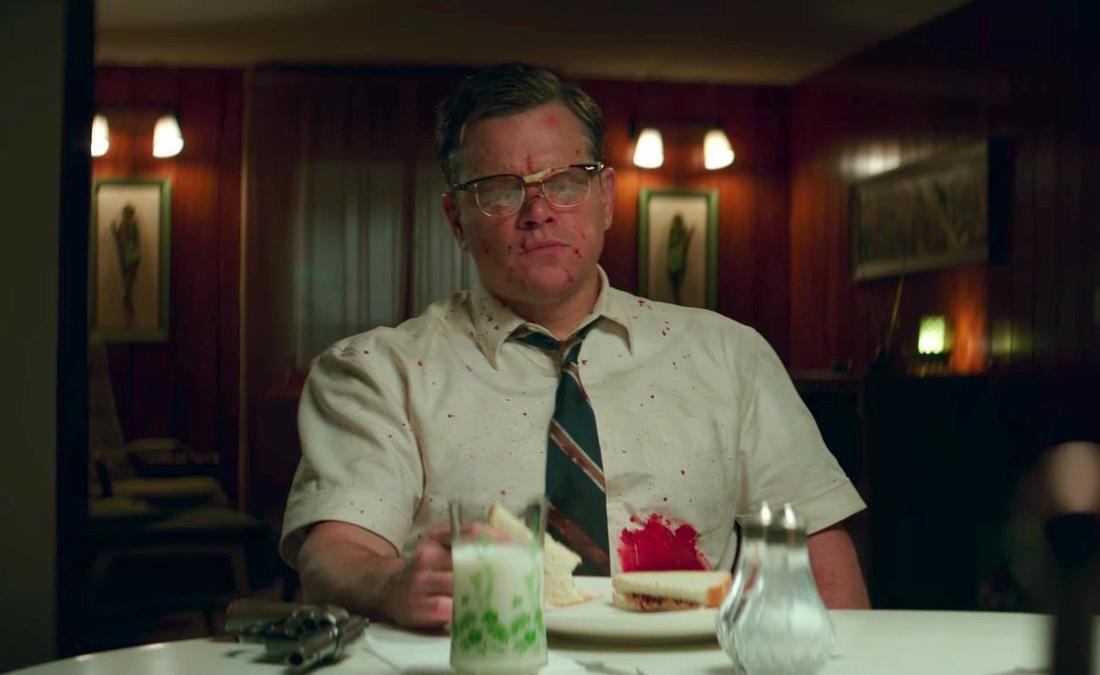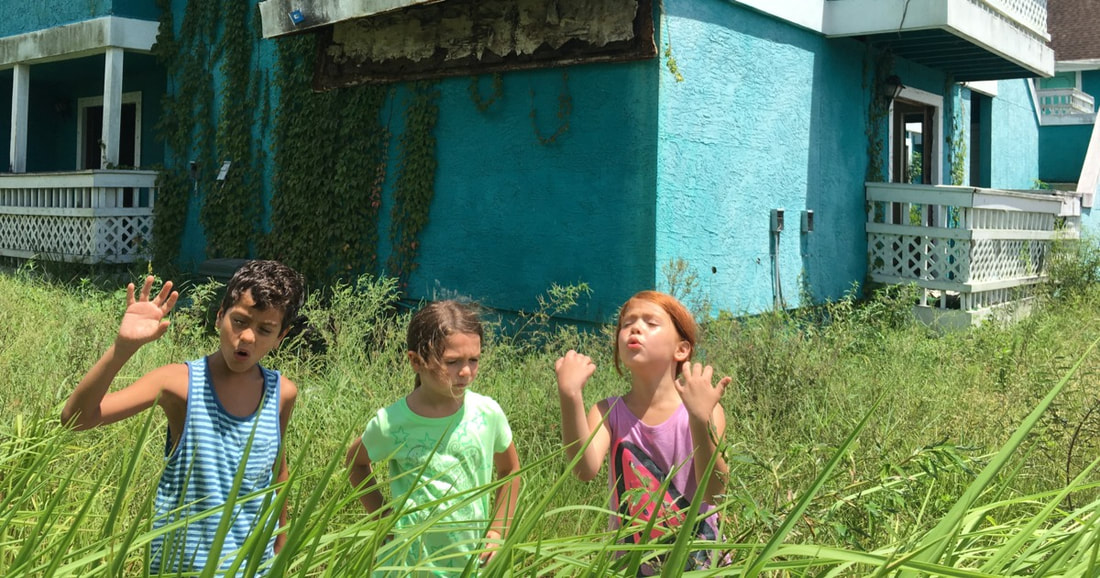Our story is set sometime in the 1950s, in the model suburban community of Suburbicon. It’s a seemingly idyllic place, full of kind people and friendly neighbors and wholesome families. However, that tranquility is shattered by a pair of shocking events. First, a woman named Rose Lodge (Julianne Moore) is murdered, leaving her husband Gardner (Matt Damon), son Nicky (Noah Jupe) and twin sister Margaret (also Juliane Moore) behind. Secondly, an African-American family moves into town, prompting anger and fear by the majority of the (otherwise all white) citizens. But it soon becomes apparent that not all is as it seems with the Lodge family, and racial tensions within the community reach a boiling point.
Directed by George Clooney and co-written by the Coen Brothers, Suburbicon seems to have a split personality. At first, it seems like it’s trying to be a Fargo-style dark comedy satirizing the idyllic vision of 1950s suburbia. However, after about 25 or 30 minutes, most of those ideas are dropped from the script and vanish from the screen, never to return. And to be fair, there are some pretty funny moments in this first section. However, their abrupt disappearance is disappointing not only because most of the humor of the film is lost, but because what replaces it is no better.
The rest of the film delves into the murder-mystery ‘who dun it’ type stories. But there’s a few problems with this. First, it’s not really a murder ‘mystery’ because it very quickly becomes obvious who killed Mrs. Lodge. And second, without spoiling anything, I think its safe to say that most audiences will not appreciate who the killer is. Dark, depressing murder stories can certainly work if they are well-written, keep you guessing, or darkly comedic, but sadly Suburbicon is none of these things, and consequently the film becomes a chore to get through.
And finally, the film also deconstructs the nostalgic idea of 50s suburbia by illuminating the racial segregation and violence which lurked just under its surface. While I think this is a laudable goal and could have made for a very interesting movie, the problem is that the subplot with the African American family has absolutely nothing to do with the rest of the plot. It feels extremely tacked-on and meaningless, even if it is one of the more interesting sections of the film. It could have vastly increased the suspense and complexity of the murder plot if they had been woven together, but instead they remain bizarrely segregated in a strange reflection of the times the film is set in.
There are the seeds of three really good movies in Suburbicon. And if those seeds had been nurtured and intertwined more carefully, than this might have even been a great movie. But they weren’t, so instead we’re left with a film/three films floundering to find their place. So if you’re passing by the town of Suburbicon on your way to the theatre this weekend, stay on the road until you arrive at a something more worth your time.
Grade: D



 RSS Feed
RSS Feed
